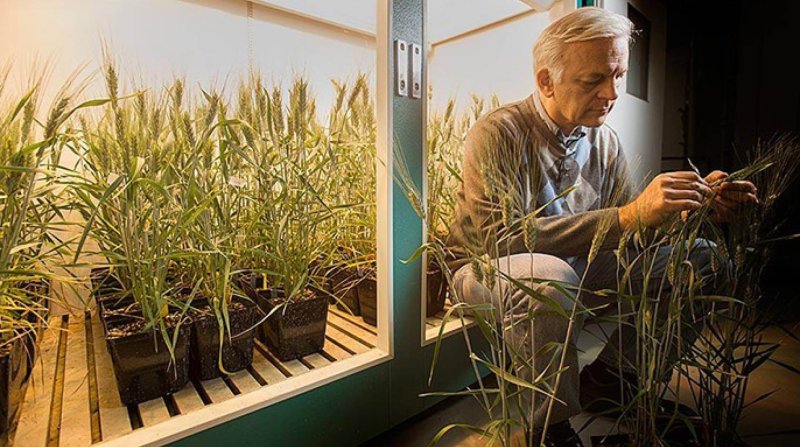Researcher Jorge Dubcovsky and his team have identified one of the genes in wheat that increases yield — the holy grail for farmers.
Yield — the amount of wheat grown per acre — is how wheat farmers pay the bills.
“The reality in breeding is that we go step by step,” he said. “In plants that have a good biomass, you can push yield 5%.”
That might not sound like much of an improvement at first.
But given that the world’s wheat farmers raise 750 million metric tons each year, and wheat produces 20% of calories and protein consumed by the human population, and the need to soon feed 3 billion more people on the same amount of land, “that 5% starts taking a different perspective,” he said.
…
Now, researchers are working on the more difficult part of the question, Dubcovsky said: making a more robust plant, with more biomass, that can mobilize more starch to the extra grains to increase yield.
“We have made a step forward,” he said. “We have half of the equation solved.”
The gene already existed in half of the modern wheat varieties in the world, he said. Identifying it may benefit those varieties that didn’t already have it. WAPO1 is frequently found in wheat varieties used to make bread flour but not in pasta wheats such as durum.































